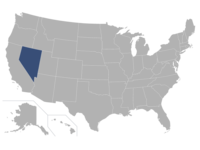Waiting for California: 6 Colorado River states reach agreement even as 7th still on sidelines

Six Western states along the Colorado River have reached a tentative agreement to cut back on shared water use from the river’s two major dams, but California — which receives the largest share of water from the river — did not sign on to the deal.
In June, Bureau of Reclamation Commissioner Camille Touton issued an ultimatum to states: Develop a plan to save 2 million to 4 million acre-feet of water by next year — roughly one-fifth of the water currently allocated to states—or the federal government will step in.
States missed that federal deadline in August, but agreed to develop a framework for a long-term solution by the end of January.
Two decades of drought and poor planning have caused the river’s biggest reservoirs — Lakes Mead and Powell — to drop to their lowest collective volume since they were filled. Water storage in both reservoirs is now a fraction of what it was two decades ago, and could drop below what’s needed to generate power or secure flow through the dams, say water experts.
On Monday, Arizona, Nevada, New Mexico, Colorado, Utah and Wyoming sent the proposed framework to the Biden administration, outlining ways to reduce water releases from both reservoirs, patch up the river’s crumbling infrastructure, improve water levels, and increase power generation throughout the region.
In a letter sent to the Bureau of Reclamation — which operates the major dams in the river system — states requested their modeling be incorporated into the agency’s larger environmental review of how to operate Glen and Hoover dams at low-water scenarios. BuRec plans to have a draft of that proposal by early March before finalizing it in August.
The alternative proposed by the states suggests a number of specific modifications to operations of Lake Powell and Lake Mead, they say could protect water delivery through 2025.
Reduced water releases and deliveries were proposed for both reservoirs. Those reductions would amount to about 2 million acre-feet in cuts to the Lower Basin. Water managers have said that about 75% of future water cuts will need to come from lower basin states — including Nevada — to reach reductions large enough to protect critical elevations in the reservoirs.
California and Mexico were included in the states modeling, however, it’s unclear how much either will ultimately contribute to the proposed cuts. Officials in California said the state would release its own plan at a later date. California previously offered to cut 400,000 acre feet, or enough to supply about 800,000 households for a year.
The agreement tentatively reached by six states also includes steps to account for water lost to evaporation, transportation, and inefficiencies. Evaporation losses would be divided between the various states based on how much water is lost within each state. The Southern Nevada Water Authority estimates that 1.5 million acre-feet of water are lost to evaporation and infrastructure issues each year in Arizona, Nevada, and California.
Southern Nevada Water Authority General Manager John Entsminger, the state’s designated representative on Colorado River matters, called the modeling proposal a “positive step forward ” in the effort to stabilize the system.
“While our goal remains achieving a seven-state agreement, developing and submitting this consensus based alternative is a positive step forward in a multi-phased environmental review process critical to protecting the Colorado River system,” Entsminger said.
Western water managers agree that the massive cuts required to protect the Colorado River have to be shared among states, adding that they would continue to work together with the federal government to reach a consensus.
“We can only save the Colorado River system if we act together,” said Becky Mitchell, director of Colorado Water Conservation Board of the Colorado Department of Natural Resources.
The proposal submitted by the states “appropriately distributes the burden across the Basin and provides safeguards for the Tribes, water users, and environmental values in the Upper Basin,” she continued.
While the proposal is not a formal agreement between the Colorado River Basin States, it serves as an alternative framework for BuRec officials to consider as they develop a more expansive environmental review.
“This modeling proposal is a key step in the ongoing dialogue among the Seven Basin States as we continue to seek a collaborative solution to stabilize the Colorado River system,” said Tom Buschatzke, Director of the Arizona Department of Water Resources.








